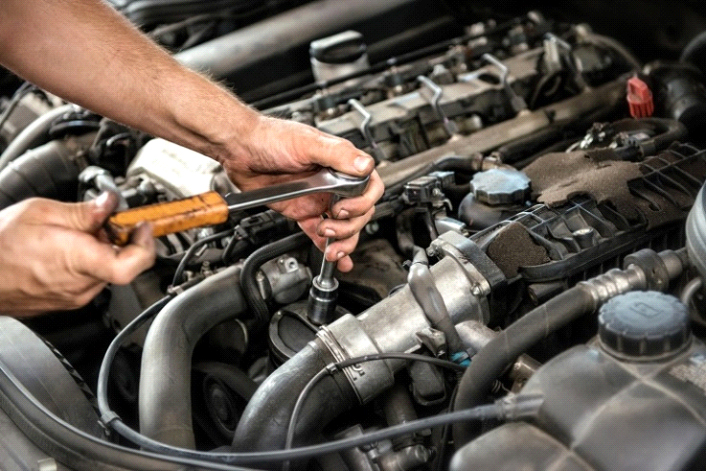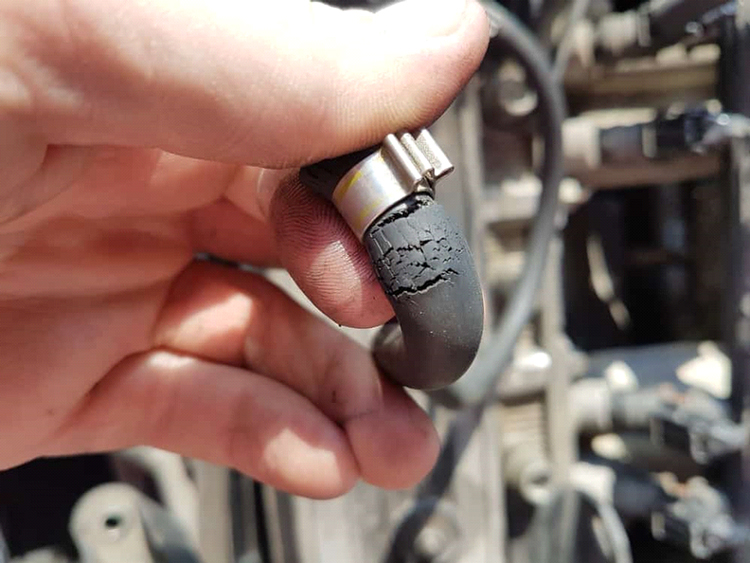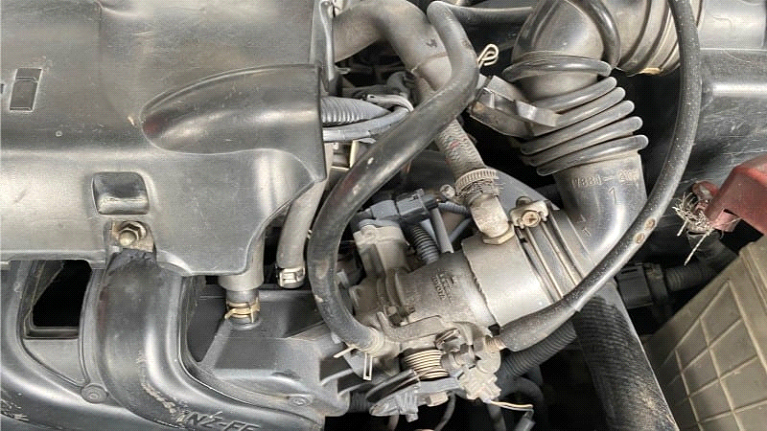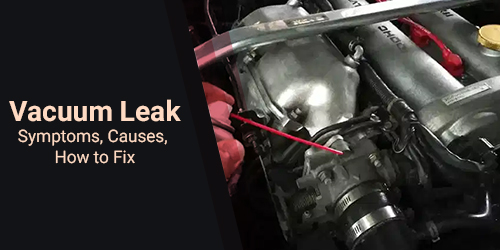If there is a vacuum leak anywhere between the engine and the mass air flow sensor, it will cause “unmeasured” air to enter the system
Your car’s engine is essentially a large, powerful vacuum pump. The up and down movement of its piston creates a vacuum, which draws air into the engine to mix with the fuel and generate power. The air used by the engine is carefully measured and measured by computer sensors, which use this data to accurately calculate the amount of fuel required for maximum power and efficiency. When unwanted and unmeasured air enters the engine, it is called a vacuum leak. These leaks can cause a lot of problems for your vehicle. Let’s take a look at some of the symptoms of vacuum leaks, or you can move on to some possible causes and solutions.
What is a vacuum leak?
There is a leak anywhere between the engine and the mass air flow sensor. In most cars, a mass air flow sensor is installed in the air filter case. In the fuel injection system, the mass air flow sensor measures the air flow to the engine. The engine computer (PCM) calculates the amount of fuel to be injected based on the measurement value of the air flow sensor.

If there is a vacuum leak anywhere between the engine and the mass air flow sensor, it will cause “unmeasured” air to enter the system. This will make the actual airflow greater than the mass airflow sensor measurement. As a result, the PCM incorrectly calculated the amount of fuel injected and the engine was running “lean.” The term “lean” means too much air and too little fuel. When idle, when the air flow is low, the effect of vacuum leakage is most obvious.
Signs of a vacuum leak
Check that the engine indicator light is on: Your engine computer can detect vacuum leaks by comparing data from various sensors. If the data from one sensor does not match the data reported by other sensors, the computer will know that something is wrong. It will record fault codes that can be retrieved using a scanning tool and turn on the inspection engine light on the dashboard.
The car is idling at high speed or occasionally idling-The amount of air that should enter the engine is limited by the throttle body. This is a butterfly valve that opens when you depress the accelerator pedal. The more you push, the larger the opening, allowing more air to enter the engine and increase its RPM. Since the vacuum leak also allows air to enter the engine, the engine will respond to idle faster. When this happens, the car’s computer will try to compensate, which usually results in sporadic or fluctuating idle speeds.

Stuck Engine – In some cases, a vacuum leak can cause the engine to stall or stall. If there is too much unmeasured air, the engine sensors may not correctly report the data to the computer. This can cause the engine to stall or just keep running when you step on the gas, and can make it difficult to start the car.
Harsh or piercing noise from the engine: A vacuum leak sounds like the end of a vacuum cleaner hose in your home. If you hear suction noise under the hood, it may be a vacuum leak.
Common causes of vacuum leak
Damaged vacuum tube or hose: The most common cause of vacuum leaks is a damaged, torn, or disconnected vacuum hose or tube. Due to the extreme heat generated by internal combustion engines, these plastic and rubber tubes can deteriorate or break and cause vacuum leaks. Many fittings that connect pipes and hoses can also break.
Actuator, solenoid, valve and regulator leaks – Vacuum hoses and pipes leading to parts can also leak. Engines manufactured in the last two to three years typically have exhaust gas recirculation (EGR) valves, secondary air injection valves, fuel pressure regulators, and bleed valves that require a vacuum source to function. If these parts break or malfunction, they may cause a vacuum leak. In addition, some older cars have vacuum drives for air conditioning, heating and even door locks, and these actuators can leak and cause problems.
Brake booster leak-If the diaphragm in the servo motor fails, a car that uses a brake booster in an electric brake system may have a vacuum leak. The first sign of this situation will be a hard-to-depress brake pedal. The check engine light will also light up normally. Before replacing the brake booster, make sure its wiring is connected and not damaged.
How to diagnose and repair a vacuum leak?

Start with a visual inspection-if you suspect that your car has a vacuum leak, the first step in the diagnosis is to check the engine carefully. Since leaks in pipes and hoses are the most common cause, open the hood and look for anything that looks inappropriate. Some cars have drawings of the suction pipe layout, which you can refer to. If you find that the hose is broken or torn, try to find a factory replacement part. If factory tubes or hoses are not available, you can try to use general vacuum hoses or tubes from auto parts stores for repairs.
Do a Smoke Test: Using smoke is a safe and effective way to find vacuum leaks. You can do it yourself, but if you’re not sure how the engine’s air intake works or just feel uncomfortable, the mechanic can check. Most stores use a professional testing machine, which produces smoke from a special liquid similar to “fog” used at concerts or parties. It is injected into the engine’s intake system with the engine off; from there you just need to look for the smoke escaping from the faulty component.
If you see smoke from any of the valves, solenoids, actuators, or regulators, new parts are usually needed. If smoke is found where the inlet port contacts the cylinder head, a new gasket will usually solve the problem.
Do not use flammable fluids: Some people use products like starting fluid or brake cleaners to find vacuum leaks by spraying them on and around the running engine. The idea is that if there is a leak, highly flammable chemicals will enter the engine and burn as fuel, causing an increase in RPM and indicating the location of the leak. For obvious reasons, this is very dangerous and should be avoided. With pressurized smoke cans, there is no need to spray dangerous chemicals on hot engines.
Prevent vacuum leaks
Although vacuum leaks can be painful, most of them can be prevented. Check your vacuum lines regularly. Especially in old cars, they will start to harden and become brittle. At this point, you will know that it is time to replace it. It is also important to use these tubes carefully when performing other car maintenance. Vacuum leakage may occur during general maintenance, such as replacing spark plugs. Carefully remove and replace these lines, you can avoid going to a repair shop.
